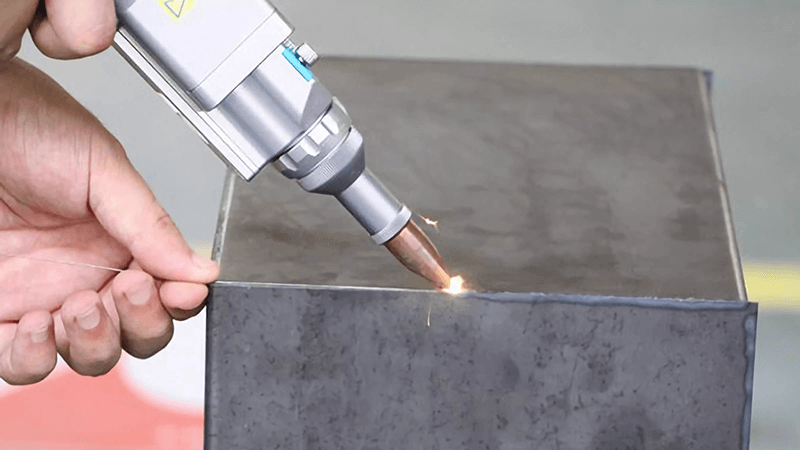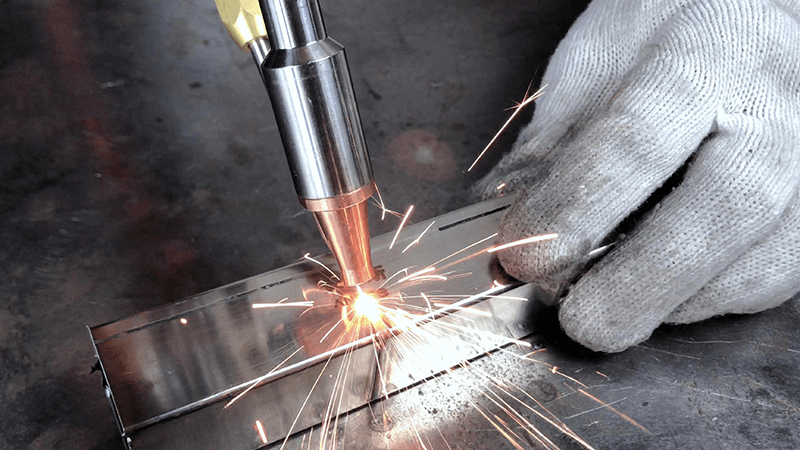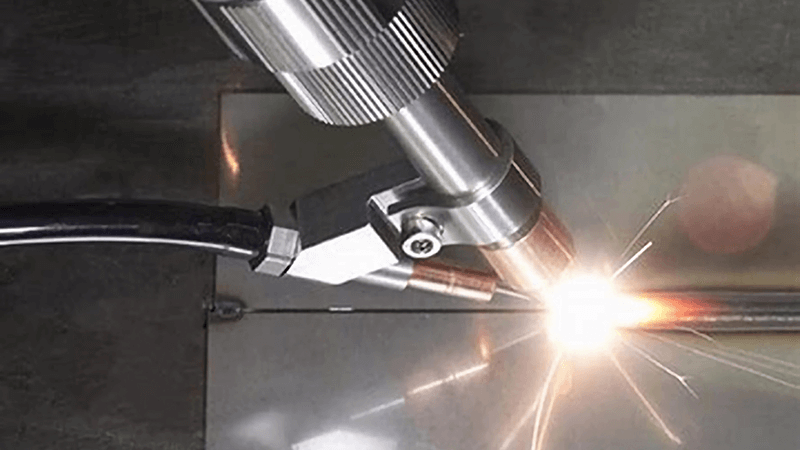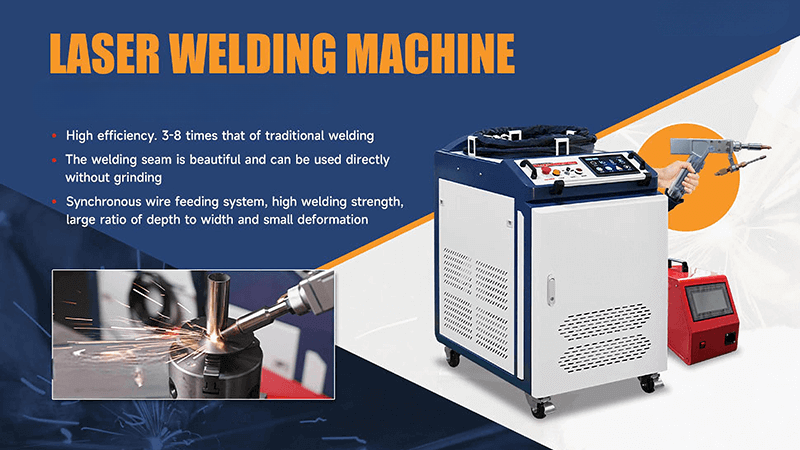Many of my clients feel overwhelmed when choosing a welding machine. With so many models and specs, where do you even start?
To choose the correct welding machine, begin by understanding your material, thickness, and workflow. Then match the right power, cooling system, and automation level — and always check your power supply.
If you choose wrong, you lose money. If you choose right, your production can transform overnight. I’ve seen both happen. Let me show you what I’ve learned after helping hundreds of clients make the right call.

How to choose the right welding machine?
Everyone wants the “best” machine, but what’s best depends entirely on what you’re welding, how fast you need to work, and how much support you’ll need over time.
The right welding machine matches your application. I start with three questions: What material? What thickness? What scale of production? These guide my choices around power, cooling, and automation.
What I look at before anything else
1. Material and thickness
At Kirin Laser, we serve clients welding carbon steel, stainless, aluminum, and even galvanized metals.
- For thin stainless parts (0.5–2mm), a 1000W fiber laser1 is often ideal.
- For thicker aluminum (3–6mm), I recommend 2000W or higher.
2. Output needs
One of my clients runs high-throughput kitchenware production. He needed to double his output. We upgraded him to a 1500W handheld fiber laser — he cut defect rates in half and hit his goals in under two weeks.
3. Cooling and stability
If you're in a hot climate or have heavy-duty cycles, go water-cooled2. Otherwise, air-cooled can save space and money.
| Power | Cooling | Voltage | Current |
|---|---|---|---|
| 1000W | Air | 220V | 20A |
| 1500W | Air | 220V | 25A |
| 2000W | Air | 220V | 35A |
| 1000W | Water | 220V | 35A |
| 1500W | Water | 220V | 35A |
| 2000W | Water | 220V | 40A |
| 3000W | Water | 380V | 30A |
My rule of thumb
If you’re welding less than 2mm thickness for most of your work, 1000W to 1500W is enough. If you need deep penetration or faster work speeds, move up to 2000W or 3000W — but only if your power system can handle it.

How to identify a good welding machine?
Not all machines are made equal. I've seen too many people fall for low-cost options that break down in months. A good machine isn’t just about specs — it’s about performance, stability, and after-sales support.
A good welding machine delivers stable output, intuitive operation, and consistent quality. It should feel reliable, with fast response, strong beam quality, and solid build.
What I always check before recommending
1. Beam stability
Power is one thing. Beam consistency is another. A machine that fluctuates ±10% in real use causes burn-throughs or weak joints. That’s not acceptable. Our Kirin Laser fiber sources are tested for stability before shipping.
2. Control interface
A complicated interface slows down workflows. I always show clients how our touch-screen interface3 simplifies weld settings. Whether they use continuous wave or pulse, they get it running in minutes.
3. Welding gun and optics
A bad gun design leads to heat buildup, wrist strain, and uneven welds. That’s why we custom-designed our handheld welding heads with ergonomic weight and excellent heat dissipation.
| Feature | Bad Machine | Good Machine (like Kirin) |
|---|---|---|
| Beam stability4 | ±10–15% | ±2% |
| Gun temperature | Hot after 5 min | Cool after 15+ min |
| UI | Cluttered or non-English | Minimal, intuitive, multi-lang |
| Power supply | Unknown brand | Branded (Raycus/IPG/Max) |
| Support | No reply for days | Response within 12 hours |
4. Long-term cost
Buying cheap always ends up expensive. I had a client who bought a no-brand 2000W machine5. Within 6 months, his lens burned out, the power dropped, and no one picked up the phone. We swapped him to Kirin — no issues since.

Which type of welding machine is best?
People often ask me if fiber is really better than TIG or MIG. I say this: it depends. But for speed, precision, and low training cost — fiber wins in 9 out of 10 cases.
For most metal applications today, fiber laser welding machines are the best choice. They deliver clean welds, fast speed, and lower operating costs with minimal training.
Why fiber laser leads the pack
1. It’s faster
You can weld 1mm stainless at 10–20x the speed of TIG. That’s real.
2. Less post-processing
No spatter, no need to grind. What you weld is what you ship.
3. Operator-friendly
Even someone new can start making usable welds after one day of training. Our handheld guns6 are light, easy to move, and have safety sensors built-in.
| Comparison | TIG Welding7 | MIG Welding | Fiber Laser |
|---|---|---|---|
| Speed | Slow | Medium | Fast |
| Training | Requires skill | Moderate | Easy to learn |
| Surface cleanup | High | Medium | Minimal |
| Maintenance | Medium | High | Low |
| Automation | Difficult | Possible | Easy |
4. Integration with automation
If you scale up, fiber is ready. You can start handheld, then upgrade to robotic arms. Our team helps clients integrate lasers into full production cells when they’re ready.

How many amps is a good welder?
This is a question I get all the time, and it’s important because it’s not just about the welder — it’s about your power supply. If your electrical system can’t handle the draw, even the best machine won’t run.
A good laser welder typically requires 20A to 40A, depending on power and cooling. 1000W to 1500W machines usually run on 220V / 20–35A. For 3000W, you'll need 380V / 30A.
What I tell clients before they order
1. Always check your breaker
I had a client try to run a 2000W water-cooled8 unit on a 15A circuit. It kept tripping. We helped him upgrade to 40A, and the issue disappeared.
2. Cooling changes current
Air-cooled systems9 generally use less current than water-cooled ones. If you're limited by your electrical setup, go air-cooled — or upgrade your shop wiring before delivery.
| Power (W) | Cooling | Voltage | Amps Needed |
|---|---|---|---|
| 1000W | Air | 220V | 20A |
| 1500W | Air | 220V | 25A |
| 2000W | Air | 220V | 35A |
| 1000W | Water | 220V | 35A |
| 1500W | Water | 220V | 35A |
| 2000W | Water | 220V | 40A |
| 3000W | Water | 380V | 30A |
3. Overbuild your power
If you're close to the max amps, I always suggest adding 10–15% headroom. That way, you avoid issues later when you weld at full power or expand.

Conclusion
Choosing the right welding machine 10 doesn’t have to be complicated. Start with your material and output goals. Match the power and cooling system to your setup. And make sure the machine — and the supplier — can grow with you. At Kirin Laser, we help our clients go from guesswork to confidence. With the right laser, you don’t just weld better — you run faster, cut waste, and get ahead of your competition.
-
Explore this link to understand the technology behind fiber lasers and their applications in various industries. ↩
-
Discover the advantages of water-cooled systems for laser applications, especially in high-temperature environments. ↩
-
Discover how a touch-screen interface can streamline welding processes, making it easier and faster to set up and operate your machine efficiently. ↩
-
Understanding beam stability is crucial for ensuring consistent performance and avoiding costly errors in welding. ↩
-
Discover top-rated 2000W machines to avoid costly issues and ensure reliable performance, as highlighted by real user experiences. ↩
-
Discover how handheld fiber laser guns enhance welding efficiency and ease, making them ideal for both beginners and advanced automation setups. ↩
-
Explore this link to understand TIG welding's pros and cons, helping you choose the best method for your specific needs and projects. ↩
-
Understanding the electrical needs of a 2000W water-cooled system ensures safe and efficient operation, preventing circuit overloads and potential hazards. ↩
-
Discover why air-cooled systems might be more suitable for your electrical setup, especially if you're limited by current capacity. ↩
-
Find the best laser welding machine and laser welding solutions from Kirin Laser, clicking this link to get all your needs for your business. ↩





